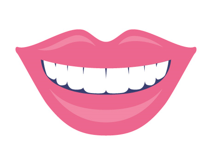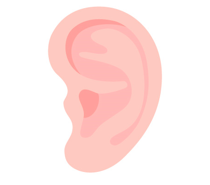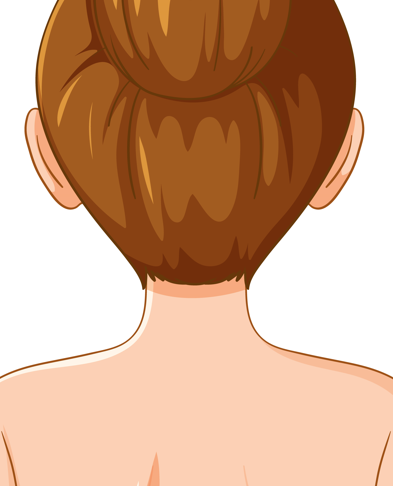
Facial paralysis, also known as facial nerve palsy, refers to a condition where facial muscles become paralyzed due to damage to the facial nerve. The facial nerve controls facial expressions, eyelid closure, and tear secretion, so damage to this nerve can lead to loss of muscle control in the face, resulting in asymmetry, drooping of the mouth, and inability to close the eye.
Our practitioner also shared about “How do TCM treat facial paralysis“, click here to see more.
Let us continue with Prac. Ong’s article sharing ~
In TCM
Facial paralysis is referred to as “Mian Bi” or “Kou Yan Wai Xie.” TCM believes that the occurrence of facial paralysis is mainly related to the invasion of wind evil, deficiency of Qi and blood, and blockage of meridians. Through TCM’s differential diagnosis and treatment, the symptoms of facial paralysis can be effectively alleviated, and the function of the facial nerve can be restored.Although both facial paralysis and stroke can lead to abnormalities in facial muscles, they are different diseases with distinct causes, courses, clinical manifestations, and treatments. Let’s learn more about the disease of facial paralysis.
Symptoms of facial palsy
Symptoms of facial palsy vary from person to person and may include:
 |
|
 |
|
 |
|
 |
|
 |
|
Classification of facial paralysis
Modern medical classification
According to the site of onset, facial paralysis can be divided into peripheral facial paralysis or central facial paralysis.
1.Peripheral Facial Paralysis

This is the most common type of facial paralysis, mainly caused by damage to the facial nerve along its path from the brainstem to the face. Common causes include:
- Bell’s Palsy: The most common type of facial nerve paralysis, usually with sudden onset and an unknown cause.
- Infectious Diseases: Such as herpes zoster infection (Ramsay Hunt syndrome), Lyme disease, etc.
- Trauma: Facial nerve damage resulting from head or facial injuries.
- Tumors: Such as acoustic neuroma or parotid gland tumors that compress the facial nerve.
2.Central Facial Paralysis

Central facial paralysis typically manifests as paralysis of the face below the corner of the mouth, while the forehead muscles are usually unaffected. This is due to lesions in the cerebral cortex or brainstem. Common causes include:
- Stroke: Paralysis of the lower half of one side of the face, which may also be accompanied by limb weakness and speech difficulties.
- Brain Tumor: May cause progressive facial paralysis, along with other neurological symptoms.
- Multiple Sclerosis: A chronic inflammatory disease of the central nervous system that can cause damage to multiple areas of the nerves.
Traditional Chinese Medicine Classification
Traditional Chinese Medicine attributes the causes of facial paralysis mainly to the invasion of wind evil, deficiency of Qi and blood, or blockage of meridians by phlegm and dampness.
| Wind Evil Invasion | The invasion of wind evil affects the facial meridians, leading to impaired circulation of qi and blood and obstruction of the meridians. This causes a lack of nourishment to the facial muscles, resulting in facial asymmetry.
|
| Deficiency of Qi and Blood | A deficiency of Qi and blood leads to insufficient nourishment of the facial meridians, causing weakness or paralysis of the facial muscles.
|
| Phlegm-Dampness Obstruction | Internal phlegm-dampness obstructs the meridian pathways, affecting the function of the facial nerves and resulting in facial paralysis symptoms.
|

Facial Paralysis is Not the Same as Stroke
While both facial paralysis and stroke involve abnormalities in facial function, they are distinct conditions with different causes and manifestations. Facial paralysis is primarily a localized dysfunction of the facial nerve, whereas a stroke is an acute vascular event in the brain. Proper identification and differentiation between these two conditions are crucial for selecting the appropriate treatment methods. Here is the progression of facial paralysis. Understanding this process and identifying the optimal treatment period can significantly improve the chances of restoring facial function!
The course of facial paralysis
| Acute Phase: Symptoms usually appear rapidly within 24-48 hours and reach their peak. Active treatment is necessary during this period. |
| Recovery Phase: Most patients will gradually recover facial function within a few weeks to months of treatment. |
| Long-Term Sequelae: A small number of patients may experience mild facial asymmetry or functional impairment as long-term residual effects. |

Why Facial Paralysis May Be Mistaken for a Stroke
In TCM, the term “stroke” is a broad concept that encompasses various symptoms, including diseases caused by “external wind evil.” Facial paralysis is considered a type of “wind evil invasion” in TCM, where “wind evil” invades the facial meridians, causing impaired circulation of Qi and blood in the face, and resulting in symptoms such as facial asymmetry and numbness. In TCM, ” wind evil invasion” can refer to various conditions, including facial paralysis, and the symptoms may overlap, leading to confusion with stroke (hemiplegia). This confusion arises primarily from the similarity in symptom presentation and the broad use of the term ” wind evil invasion” in TCM. In Western medicine, facial paralysis (such as Bell’s palsy) and stroke (cerebrovascular accident) are distinct conditions, though they may have similar symptoms. Their causes, treatment methods, and prognosis are significantly different.
此文章还有以下语言版本:
![]() 简体中文 (Chinese (Simplified))
简体中文 (Chinese (Simplified))



